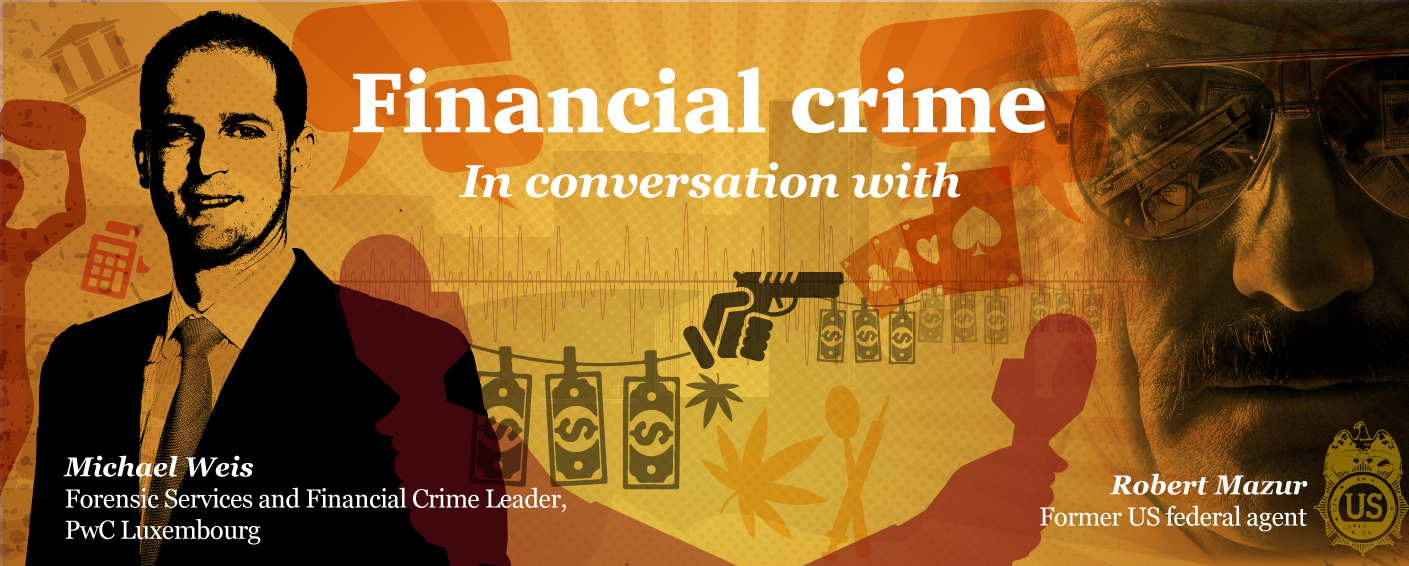Cyber crimes, money laundering, robbery, selling of controlled substances, and abuses of economic aid are all examples of economic crimes. New criminal trends have recently emerged in different business sectors and industries. We interviewed Robert Mazur, the former US federal agent who went undercover deep into Pablo Escobar’s Medellín Cartel and Michael Weis, Forensic Services and Financial Crime Leader, to understand how significant these threats have turned.
Infiltrating economic crime
What drives an honest police officer to infiltrate one of the world’s largest and most dangerous cartels in the 1980s? What it’s like to be the link between drug organisations and financial institutions to reveal money laundering realities? Robert Mazur talks about the lessons we’ve learnt from his past experience, while Michael Weis gives an overview of the current financial crime landscape and its innovations.
Financial crime trends in 2017
A slowdown in new regulation
Regulators will issue fewer new financial crime regulations. Yet, they will relentlessly focus on effective compliance with existing requirements. Due to delays in implementing strong Anti-Financial Crime (AFC) controls, we expect their patience to be running out.
More intrusive surveillance
There will be more surveillance of employees’ business activities. Using more sophisticated voice surveillance and trade monitoring will become the norm, partly translating increased regulatory scrutiny on fraud, market abuse and anti-bribery and corruption controls.
The convergence of financial and cyber crime
Financial and cyber crime will increasingly converge, driving a greater focus on a more coordinated response. This will include combined risk and threat assessments for new digital products or digitised activities.
Data galore
The establishment and use of data lakes containing data to help prevent and detect financial crime will continue. Artificial intelligence and machine learning solutions will further enhance the response capacity.
Biometrics and Blockchain
2017 could become the year in which biometrics and blockchain gain traction. The use of biometrics and other digital identity technology has the potential to transform customer onboarding. Some blockchain use cases will help prevent and detect financial crime. Combined, and used effectively together, they could make a real difference.
Outside the banking sector
There will be renewed and greater focus by regulators on the effectiveness of anti-financial crime controls in the insurance, asset management and private wealth management sectors. Historic levels of reliance placed by some on controls carried out by banks and others become harder to justify.
The cost problem
Fighting financial crime is expensive, but new IT and increased efficiency solutions could solve this. Combined with multi-institution data sharing, technology-enabled managed service and utility solutions have the potential to both reduce cost and improve quality.
Technology trends
We expect advanced technology solutions, particularly for transaction monitoring and data analytics, to gain ground quickly. With skilled staff in short supply, this is a business imperative. Many FinTech organisations will either fall by the wayside or clarify what they can really offer and become part of the solution.
The role of sanctions
Sanctions will continue to be used as a political tool. However, with the new US and other administrations changes, the application is perhaps more uncertain. New enforcement bodies in Europe will also create a new dynamic. Therefore, the need for financial institutions to focus on sanctions compliance remains key.
The need for greater operational effectiveness
More financial institutions are joining the trend to re-engineer their anti-financial crime compliance and associated functions for greater operational effectiveness. Typical drivers include a desire to break down functional silos and have much clearer and more robust definitions of the respective roles and responsibilities of the first, second and third lines of defence.
For more insights into current and future risks, check our Global Economic Crime Survey 2016 Luxembourg Report.

